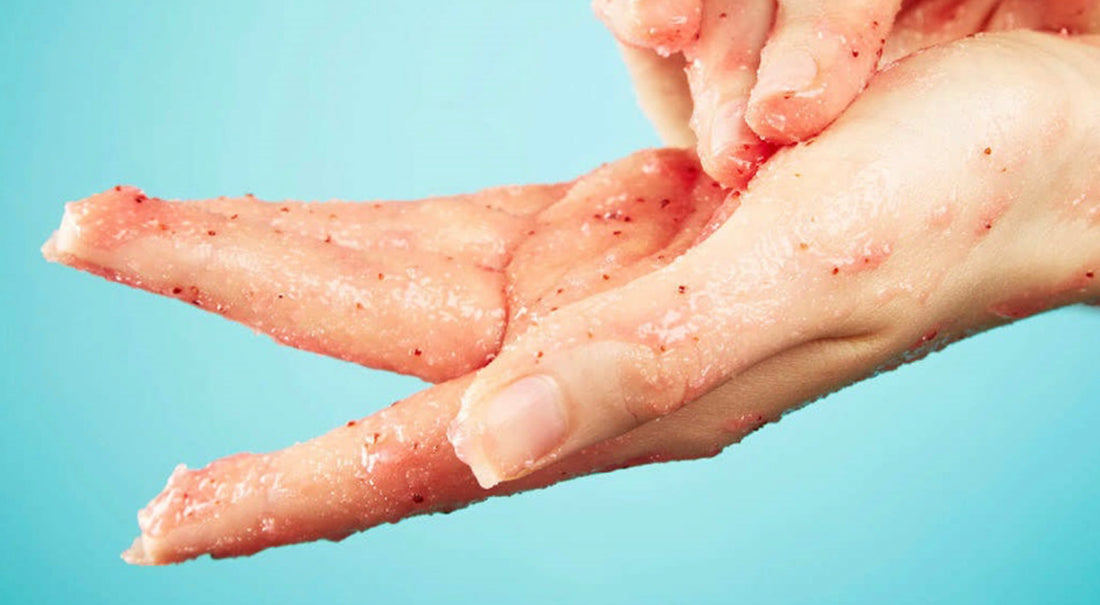
Let's Beat the Microbead
What are microbeads and how are they bad for my planet?
Microbeads literally all go down the drain... How can you prevent microplastics from ending up in our wastewater and oceans? Shop and chose wisely! Microbeads are tiny pieces of plastic, often microscopic in size, that are added to a range of products, including cosmetics, personal care and cleaning products.
We might all have used exfoliating face scrubs and toothpastes that contain microplastics. Or cleaning products that we prefer due to their abrasive properties.
All contain millions of pieces of microplastics!
Thousands of tonnes of plastic microbeads from these products end up in the sea every year, where they harm wildlife and can ultimately be eaten by people!
Ban the bead!
In 2015 the USA banned microplastics for being used in cosmetics and cleaning product, in 2018 the UK follows. Yet only in 2022 NSW, yep only one state in Australia, follows now on Nov 1st, with banning the use of microplastics!
What is in these microplastics?
- Polyethylene (PE)
- Polyethylene terephthalate (PET)
- Nylon (PA)
- Polypropylene (PP)
- Polymethyl methacrylate (PMMA).
Polyethylene is not so different from vinyl, polymer, from our plastic bottles and yes pvc sits in this group also and don't forget nylon clothing, which don't have a place in our environment and body. Stuff we would not want to consume....
Time to change!
Never too late you think? What about all the damage done so far? Isn't water filtered at the waste water plant taking these out? These tiny plastic pieces end up in rivers, lakes and oceans by being washed down sinks or drains after use. Microbeads are so small they cannot be filtered out during normal sewage treatment works.
Once in the water, microbeads cause harm in the environment and to human health due to their composition, ability to attract toxins and to transfer up the food chain, hence ending up in our bodies.
Microbeads persist in the environment now as they do not readily biodegrade and are almost impossible to remove from the environment due to their size. The best way to reduce their impact is to stop microbeads and buy product without.
Who's been the driving force behind getting rid of these microplastics? Since 2016, a voluntary industry microplastics phase-out, has been led by Accord Australasia through their BeadRecede campaign, overseen by the Commonwealth Department of Agriculture, Water and the Environment and the NSW EPA, yet voluntary phasing these microplastics out is not enough!
Self-check time...
So how many rinse-off personal care product do you have in your bathroom? You might not use exfoliating creams, however your standard shampoo can contain microplastics! Let's check the product labels of these....
- shampoo and conditioner
- face masks and face wash, including exfoliants
- hair dye, whether permanent, semi-permanent or otherwise
- toothpaste
- body wash products, including exfoliants.
Alternatives
The global ban on plastic microbeads for personal care products has forced researchers to find sustainable alternatives. Such as biodegradable beads, that desolve in soil. Also Chito beads were created, which is claimed to be a renewable polymer from crustacean waste. Chito, or chitin is found in crustacean shells, and is a natural polymer from seafood waste. However at this stage, current biodegradable microbeads or Chito beads rarely offer competitive qualities to make this interesting for commercial cosmetics or cleaning product companies. Yet it's a start and shows that humans are capable of adapting and finding better ways to reduce plastic from our environment!
Keep adapting and finding better ways!
Let's check our cosmetics and cleaners before we buy. Check the Beat the Microbead, website supported by more than 90 NGOs from 38 countries. Its website has an extensive database of products that contain microplastics in many countries, including Australia.
Let's not wash plastics down our drains, keep plastic out of our oceans!
Check your products or let's scrub the old fashioned way with a bar of natural soap!
Source: epa.nsw.gov.au, theguardian.com, greenchemistryjournal, newatlas.com, choice.com.au
Photo credit: choice.com
Ploys.com.au
